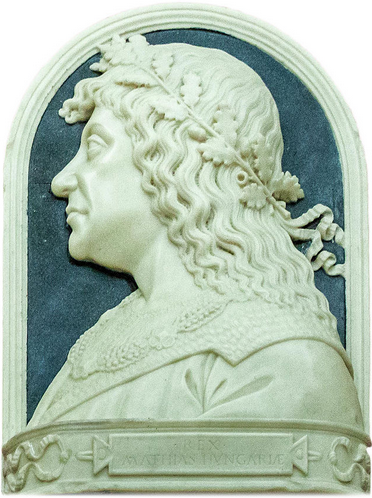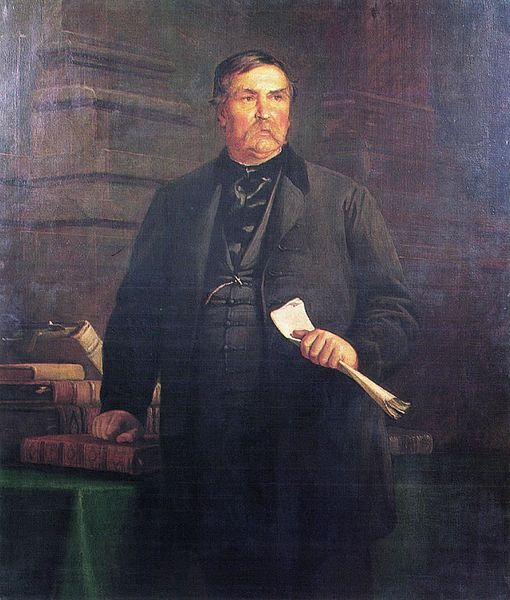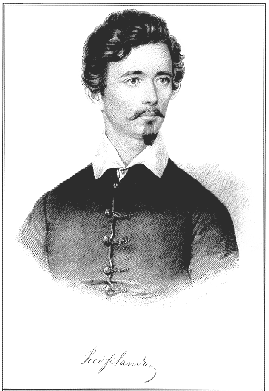1/18
Szent István
Where you’ve seen this name: Saint Stephen’s Basilica and the section of the Grand Boulevard called Szent István körút. He is also on the 10,000 forint note.
It’s no wonder the Basilica is named after Szent István for he was the founder and first King of Hungary and is a saint also. István is a name equivalent to Stephen, so you’ll often see “Saint Stephen”. Hungary was made up of pagan territories until about the year 1000 when Grand Prince Stephen, who’d become somewhat of a devout Christian, defeated his competitor for the throne - the pagan Koppány, who was quartered and his body parts sent to the four corners of the territory. Szent István himself had grown up pagan and was given the pagan name “Vajk” as a child, but he believed that Christianity was the best future for Hungary and he tried, over the decades of his rule, to turn Hungary into a strongly Christian country. He was canonised on 20 August 1083.
2/18
Szent Gellért
Where you’ve seen this name: Gellért Hill, Gellért Bath and Gellért Square.
Saint Gellért was actually an Italian Benedictine monk from Venice. While on pilgrimage to Jerusalem he met King Stephen and became his son's tutor and came to Hungary. After King Stephen’s death there was a revolt against Christianity. There are various accounts of Saint Gellért’s death but one is that during a pagan uprising in 1046 he was put in a barrel and rolled down a hill into the Danube – that hill is now Gellért Hill.
3/18
Hunyadi Mátyás
Where you’ve seen this name: Mátyás-templom (Matthias Church) at Buda Castle, Hunyadi Square. He is also on the 1000 forint note. the Corvinus University of Budapest is named after the Bibliotheca Corviniana library, which was established by King Matthias.
Matthias Corvinus was the King of Hungary from 1458–1490. He is considered by many to have been a just king. During his reign Hungary was a strong, wealthy and creative country.
4/18
Deák Ferenc
Where you’ve seen this name: Deák Ferenc Square, a station on the M1, M2 and M3 metro lines, and a huge mausoleum in his honour at the National Burial Ground. He is also on the 20,000 forint note.
Deák Ferenc was a Hungarian statesman and Minister of Justice. He is considered to be one of the most respected politicians in Hungary’s history. One legend is that highway robbers who'd looted his travelling party gave what was taken from Deák Ferenc back when they realised who he was. He was involved in the revolution against the Habsburgs in 1848-49 when Hungary tried to gain its freedom from Austria, but he was an advocate for peaceful reform as opposed to violence and he tried to negotiate a compromise with the Habsburg Monarchy. He had a serious role in the eventual deal that resulted in the Austro-Hungarian Empire in 1867, and he’s considered “a wise man of the homeland.”
5/18
Széchenyi István
Where you’ve seen this name: Széchenyi Chain Bridge, Széchenyi Bath. He is also on the 5,000 forint note.
Széchenyi István was a politician and statesman. He travelled widely in his youth and saw a disparity between the countries he visited and Hungary. Upon his return he turned to politics and to supporting various projects. He is considered the “Greatest Hungarian” because of his role in establishing many things that are still important even. For example he was crucial in establishing the Hungarian Academy of Sciences, and he supported the construction of the Chain Bridge. His father, Count Ferenc Széchényi established the Hungarian National Museum and it’s actually for his father that the National Széchényi Library is named. Note that the second 'e' in Széchenyi István's name doesn't have an accent and it's believed this was simply a personal choice.
6/18
Kossuth Lajos
Where you’ve seen this name: Kossuth Square directly in front of the Parliament.
Kossuth Lajos was a lawyer and politician, as well as the Regent-President of the Kingdom of Hungary during the revolution of 1848. He was a key figure in this revolution and agitated for complete independence from Austria. After the revolution failed, it's rumoured he escaped the country in a woman’s costume. Later he spent time in England, the United States and Italy where he continued to fight for Hungary’s independence.
7/18
Batthyány Lajos
Where you’ve seen this name: Batthyány Square on Buda’s Danube bank directly opposite the Parliament building, and a stop on the M2 metro line.
Batthyány Lajos was the first Prime Minister of Hungary and he was Prime Minister during the 1848 revolution. Among many things Batthyány supported horse and silkworm breeding. Politically, he was caught between Hungarian separatists and the Austrian rulers during the 1848 revolution. Eventually he was caught on the wrong side and sentenced to hang. His wife smuggled a knife to him in prison and he tried to kill himself but failed. This meant he could no longer be hanged and was instead to face a firing squad. But for some reason he was so drugged that in his exasperation a commander decided to shoot him straight in the head. Just before his death Batthyány proclaimed: “Long live my country! Come on, huntsmen!'
8/18
Petőfi Sándor
Where you’ve seen this name: Petőfi Bridge
Petőfi Sándor was a key figure in the 1848 revolution and is also Hungary's National Poet. His famous National Song is thought to have inspired the revolution against the Habsburgs. He regularly met with other intellectuals at Café Pilvax, and while there’s still a café with this name it’s not quite the same one. Petőfi is thought to have died in one of the last battles of the revolution although the whereabouts of his body is unknown.
9/18
Andrássy Gyula
Where you’ve seen this name: the famous Andrássy Avenue that goes from Elizabeth Square to Heroes’ Square. It’s lined with expensive shops and exclusive apartments.
This grand and elegant boulevard was named after Prime Minister Count Gyula Andrássy who was both the Prime Minister between 1867-71 and also a very good looking man. After a period in exile after the 1848 revolution he returned to Hungary. The Austrian King appointed him as the first Prime Minister of the Hungarian half of the new Dual Monarchy of Austria-Hungary.
10/18
Erzsébet királyné
Where you’ve seen this name: Elizabeth Square and Elizabeth Bridge
The Empress of Austria and Queen of Hungary, Elizabeth, was perhaps a reluctant Queen and spent much time in Hungary – a country she felt deep affinity for. 'Erzsébet' is the equivalent of Elizabeth, but her nickname was Sissi. In an unfortunate turn of events she was stabbed to death in 1898 by an Italian anarchist who had failed to kill Prince Phillipe and wanted to kill the next monarch he saw.
11/18
Blaha Lujza
Where you’ve seen this name: Blaha Lujza Square and a station on the M2 metro line
Blaha Lujza was a famous actress in the late 1800s and early 1900s and one of the greatest acting stars of the time. She's dubbed “the nation’s nightingale.” She was a permanent member of the Hungarian National Theater, which was, for a time, located at the square now named after her.
12/18
Árpád-házi Szent Margit
Where you’ve seen this name: Margaret Island and Margaret Bridge.
Margaret (Margit in Hungarian) was just a child in the 1200s when she was sent to live in a Dominican convent on what was known then as Rabbit Island. She was the daughter of King Béla IV of Hungary. It’s believed Margaret chastised herself wearing an iron girdle, hairshirts and shoes spiked with nails, as well as seeking to do the dirtiest tasks in the monastery. A number of applications for her to be canonised were rejected although dozens of miracles are ascribed to her - mostly for curing illness. She was made a Saint in 1943.
13/18
Móricz Zsigmond
Where you’ve seen this name: A large square in Buda and a stop on the M4 metro line.
Móricz Zsigmond was a novelist with his works dealing mainly with the issues of poverty and the peasantry.
14/18
Széll Kálmán
Where you’ve seen this name: a square in Buda where trams 4 and 6 go, as well as a stop on the M2 metro line.
Széll Kálmán was a Prime Minister of Hungary from 1899 to 1903.
15/18
Heroes' Square
Where you’ve seen this name: on the statues at Heroes’ Square.
The two colonnades at Heroes' Square display 14 important historical figures of Hungary including Saint Stephen, Kossuth Lajos, Francis II Rákóczi, János Hunyadi, István Bocskay, Gabriel Bethlen and Imre Thököly. They form a semi-circle around a column, which is surrounded by the seven Magyar chieftains and topped by the archangel Gabriel.
16/18
Sections of the Grand Boulevard
Where you’ve seen this name: a section of the Grand Boulevard, so: József körút, Ferenc körút, Erzsébet körút, Teréz körút, and Szent István körút.
The Grand Boulevard is a ring road that leads from Petőfi Bridge to Margaret Bridge and among the world's busiest tram lines (4 and 6) also travel along it. Szent István is of course Saint Stephen – the founding king of Hungary – while the others were also monarchs.
17/18
Kálvin János
Where you’ve seen this name: a square in the heart of Budapest at the centre of a major thoroughfare - the Inner Circuit (small ring road) where tram lines 47 and 49 go cuts through it.
John Calvin was not a Hungarian but a protestant reformer who had French origins. His name equates to Kálvin János in Hungarian. Kálvin Square was named in his honour due to a large Reformed Church built there.
18/18
Liszt Ferenc
Where you’ve seen this name: the Liszt Ferenc International Airport if you entered Hungary by plane, , .
Liszt Ferenc was a 19th century pianist, composer and conductor, said to be one of the best pianists of all time.




















